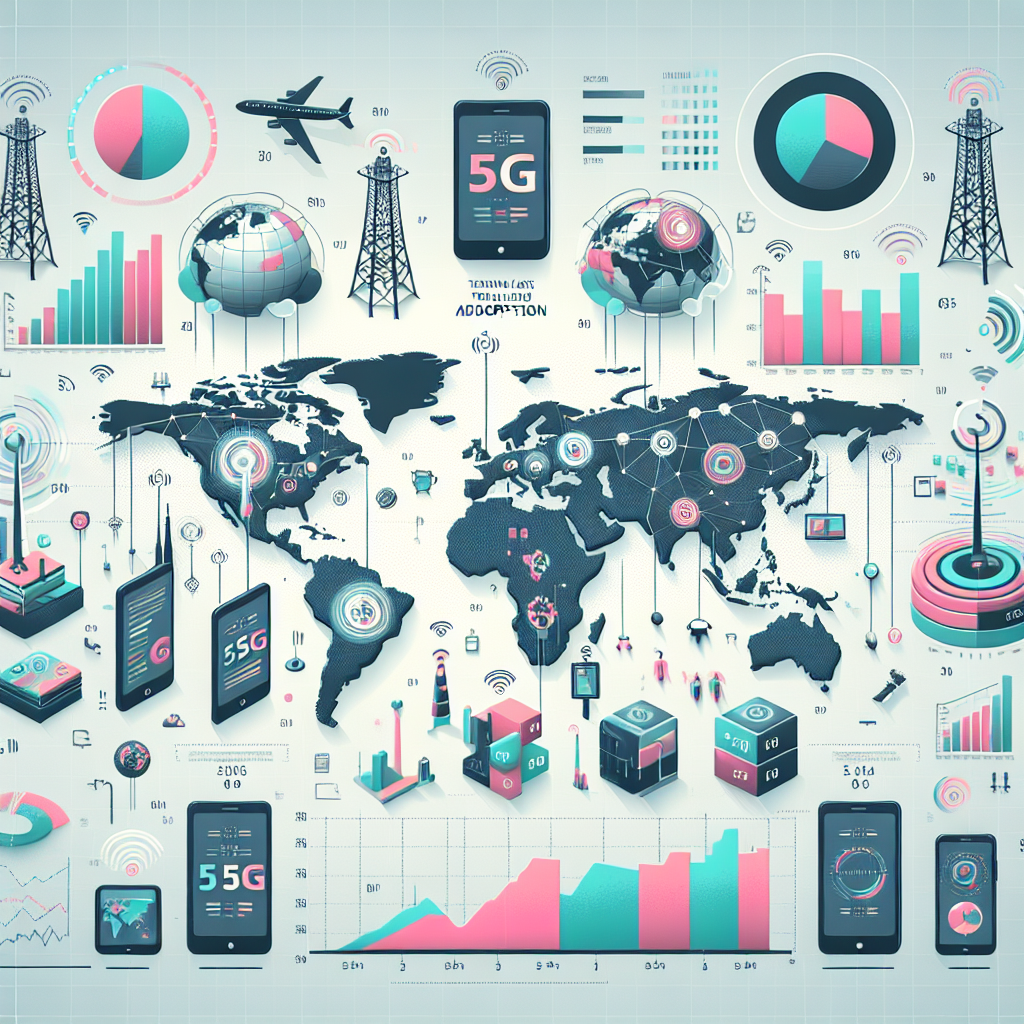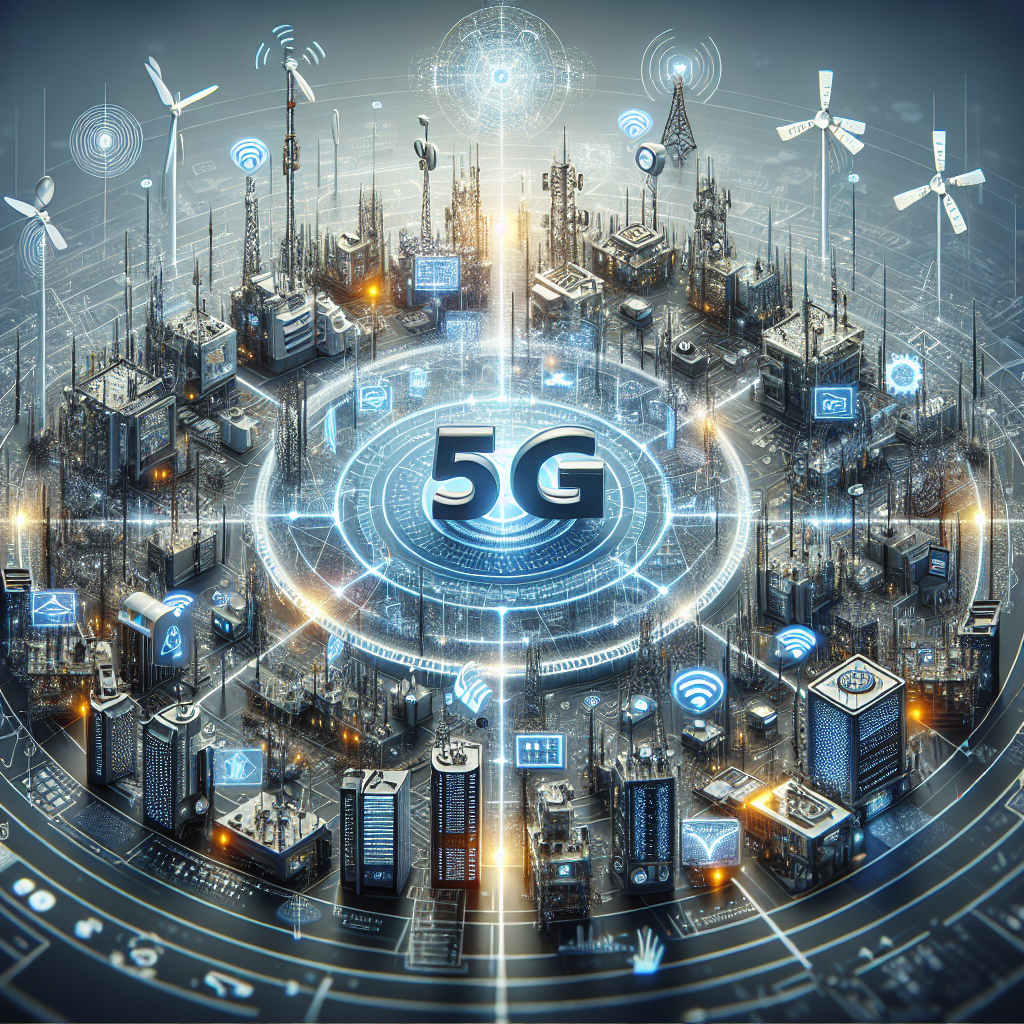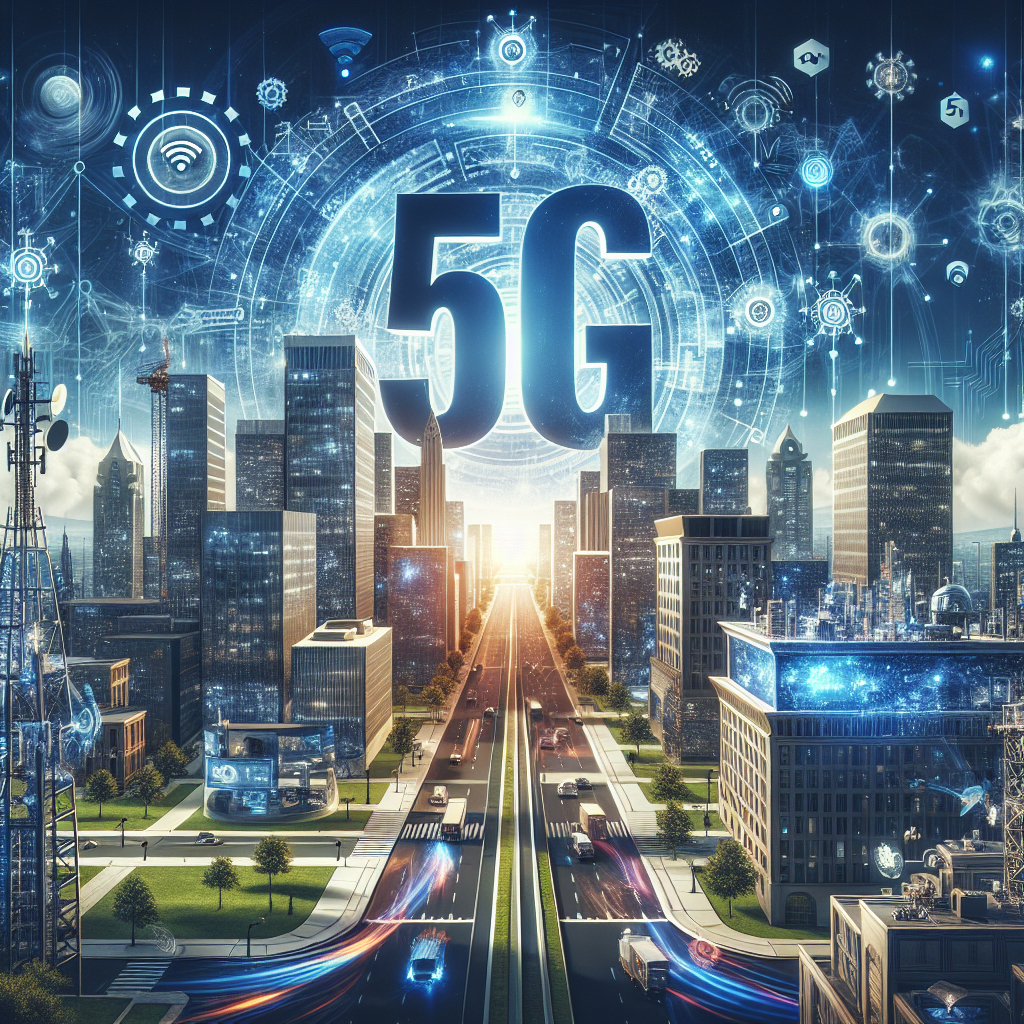In this rapidly evolving digital era, the adoption rates of 5G technology have become a critical indicator of a nation’s technological advancement and connectivity infrastructure. The landscape of 5G technology adoption rates is a dynamic and ever-changing realm, with countries around the world racing to embrace the potential of lightning-fast internet speeds and unprecedented connectivity. This exploration delves into the intricate web of factors influencing the uptake of 5G technology, from economic considerations to regulatory frameworks, and showcases the frontrunners and laggers in this transformative revolution. Join us on a journey through the fascinating world of 5G technology adoption rates and discover the key players shaping our digital future.
Understanding 5G Technology Adoption

Definition of 5G Technology
5G technology refers to the fifth generation of mobile networks that promise significantly faster data speeds, lower latency, and the ability to connect a vast number of devices simultaneously. It operates on higher frequency bands compared to its predecessors, enabling enhanced performance and capacity for wireless communication.
Importance of 5G Technology in the Digital Landscape
In the digital landscape, 5G technology plays a pivotal role in facilitating the advancement of various sectors such as healthcare, transportation, manufacturing, and entertainment. Its high-speed connectivity and low latency are crucial for enabling innovations like autonomous vehicles, remote surgery, augmented reality applications, and the Internet of Things (IoT).
Overview of the Current Status of 5G Implementation in the USA
Currently, the USA is witnessing a gradual rollout of 5G networks by major telecommunications companies like Verizon, AT&T, and T-Mobile. While initial deployments are focused on urban areas, there is a concerted effort to expand coverage nationwide. The adoption rates vary across regions, with metropolitan areas experiencing faster uptake due to the higher demand for improved connectivity.

Factors Influencing 5G Adoption Rates
Technological Advancements
Technological advancements play a pivotal role in shaping the landscape of 5G technology adoption rates. As the digital ecosystem evolves, innovations in hardware and software have a direct impact on the feasibility and scalability of 5G networks. Key details in this area include:
- Miniaturization of Components: The miniaturization of components, such as antennas and transceivers, has enabled the development of compact and powerful 5G-enabled devices. This advancement allows for seamless integration of 5G technology into various consumer electronics and industrial applications.
- Beamforming Technology: Beamforming technology, a key feature of 5G networks, leverages advanced signal processing techniques to enhance network efficiency and reliability. By dynamically focusing radio waves towards specific users, beamforming optimizes signal strength and minimizes interference, thereby improving overall network performance.
- Software-Defined Networking (SDN): The integration of Software-Defined Networking (SDN) principles in 5G architecture enables operators to dynamically manage network resources and adapt to changing demands in real-time. SDN enhances network flexibility, scalability, and efficiency, making it easier to deploy and maintain 5G infrastructure.
- Virtualization and Cloud Computing: The convergence of virtualization and cloud computing technologies has revolutionized the way 5G networks are deployed and operated. By virtualizing network functions and leveraging cloud-based resources, operators can achieve cost-effective scalability and rapid service innovation, driving higher adoption rates of 5G technology.
In conclusion, ongoing technological advancements continue to reshape the 5G landscape, offering new opportunities for enhanced connectivity, improved network performance, and accelerated adoption rates across diverse industries and consumer segments.
Regulatory Environment
The regulatory environment plays a crucial role in shaping the adoption rates of 5G technology. Influence of regulatory policies on 5G deployment can either facilitate or hinder the rollout of 5G networks. Regulatory frameworks that prioritize spectrum allocation for 5G networks and streamline the permitting process for infrastructure deployment tend to accelerate the adoption of 5G technology. Conversely, overly restrictive regulations or delays in spectrum auctions can impede the progress of 5G deployment, leading to slower adoption rates.
Government initiatives to promote 5G technology adoption also significantly impact the pace of 5G adoption. Governments around the world have been implementing various strategies to incentivize the adoption of 5G technology, such as providing funding for research and development, offering tax incentives for companies investing in 5G infrastructure, and launching public-private partnerships to support 5G deployment. These initiatives not only encourage investment in 5G technology but also create an enabling environment for widespread adoption among businesses and consumers.
Industry Collaboration
Factors Influencing 5G Adoption Rates
Collaboration among industry stakeholders plays a pivotal role in driving the adoption rates of 5G technology. This cooperation is essential for the seamless integration of 5G networks across various sectors.
- Importance of collaboration among industry stakeholders:
- Industry collaboration ensures that different players work together towards a common goal of implementing 5G technology effectively.
- By sharing resources, expertise, and knowledge, stakeholders can address challenges more efficiently and accelerate the deployment of 5G networks.
- Collaboration fosters innovation and enables the development of use cases that cater to diverse industry needs, ultimately boosting the adoption rates of 5G technology.
- Examples of successful partnerships driving 5G adoption rates:
- Telecom companies partnering with technology providers to enhance network infrastructure and offer advanced 5G services to customers.
- Collaboration between device manufacturers and network operators to ensure the compatibility of 5G-enabled devices with network specifications.
- Joint initiatives between governments, regulatory bodies, and industry players to create supportive policies and frameworks that facilitate the widespread adoption of 5G technology.
Challenges Hindering 5G Adoption
Cost Considerations
hallenges Hindering 5G Adoption
- Financial Implications of 5G Implementation for Businesses and Consumers
The transition to 5G technology comes with significant financial implications for both businesses and consumers. Businesses need to invest in upgrading their infrastructure to support 5G networks, which includes purchasing new equipment, training employees, and ensuring compatibility with existing systems. On the consumer side, the cost of purchasing 5G-enabled devices and subscribing to 5G plans can be a barrier to adoption. Additionally, the ongoing operational costs associated with maintaining and optimizing 5G networks add to the overall financial burden.
- Strategies to Overcome Cost Barriers in Adopting 5G Technology
To address the cost barriers hindering the adoption of 5G technology, businesses and consumers can explore various strategies. Implementing phased deployment plans can help spread out the upfront investment costs over time, allowing organizations to manage their budgets more effectively. Negotiating competitive pricing with 5G service providers and exploring partnerships with vendors can also help reduce costs. Moreover, leveraging government incentives and grants aimed at promoting 5G adoption can provide financial support to offset implementation expenses. Additionally, organizations can conduct thorough cost-benefit analyses to assess the long-term value and returns on investment associated with transitioning to 5G technology.
Security Concerns
The security concerns surrounding the adoption of 5G technology are significant and must be addressed to facilitate widespread acceptance and implementation. Some key aspects of these security concerns include:
- Vulnerabilities in Network Architecture: The complex nature of 5G networks, with a higher number of interconnected devices and increased reliance on virtualization and software-defined networking, creates potential vulnerabilities that malicious actors could exploit.
- Privacy Risks: 5G technology enables the collection and processing of vast amounts of data at high speeds, raising concerns about the privacy of user information. Unauthorized access to this data could have severe repercussions for individuals and organizations alike.
- Potential for Network Slicing Attacks: Network slicing, a feature of 5G that allows the creation of multiple virtual networks on a shared physical infrastructure, introduces the risk of attacks targeting specific slices, thereby affecting the overall network performance and integrity.
- Supply Chain Security: As the 5G ecosystem involves multiple vendors and stakeholders, ensuring the security of the entire supply chain is crucial. Compromised components or software at any point in the supply chain could compromise the security of the entire network.
Addressing these security concerns requires a multifaceted approach that encompasses technological solutions, regulatory frameworks, and industry collaboration. Implementing robust security measures at every level of the 5G infrastructure is essential to building trust and confidence in the technology among users and organizations.
Network Coverage and Reliability
- Ensuring widespread network coverage for seamless 5G connectivity
In the landscape of 5G technology adoption rates, one of the primary challenges hindering widespread adoption is the need for comprehensive network coverage. Unlike previous generations of wireless technology, 5G networks require a denser infrastructure of small cells and base stations to deliver the promised high-speed, low-latency connectivity. This necessitates significant investments in expanding the network infrastructure to ensure that 5G signals reach urban, suburban, and rural areas alike. Without adequate coverage, users may experience inconsistencies in connectivity and performance, impeding the seamless adoption of 5G technology across different regions.
- Enhancing network reliability to meet the demands of high-speed 5G services
Another critical aspect influencing the adoption rates of 5G technology is the imperative to enhance network reliability. Given the high data transfer speeds and low latency capabilities of 5G networks, reliability becomes paramount to support a wide range of applications, including IoT devices, autonomous vehicles, and mission-critical communications. Maintaining a reliable network infrastructure involves minimizing signal interference, optimizing network protocols, and implementing robust security measures to safeguard against potential cyber threats. Any disruptions or downtime in 5G networks can significantly impact user experience and trust in the technology, thereby slowing down the overall adoption rates.
Regional Disparities in 5G Adoption
Urban vs. Rural Divide
- Disparities in 5G infrastructure between urban and rural areas:
- Urban areas typically have more advanced 5G infrastructure due to higher population density and greater commercial viability for telecom companies. This results in faster deployment and broader coverage of 5G networks in cities compared to rural regions.
- In contrast, rural areas face challenges such as limited resources, higher implementation costs, and lower population density, making it less economically attractive for telecom providers to invest in 5G infrastructure. As a result, rural communities often experience delays in receiving 5G connectivity, leading to a significant urban-rural digital divide.
- Initiatives to bridge the digital divide and promote equitable 5G access:
- Governments and regulatory bodies are implementing policies and incentives to encourage telecom companies to expand 5G networks to rural areas. These initiatives include subsidies, tax breaks, and funding programs aimed at facilitating infrastructure development in underserved regions.
- Public-private partnerships are also being forged to accelerate the rollout of 5G technology in rural communities. By collaborating with local governments and organizations, telecom providers can leverage resources and expertise to overcome logistical challenges and improve connectivity in rural areas.
- Community-driven efforts, such as grassroots campaigns and advocacy groups, play a crucial role in raising awareness about the importance of 5G access in rural areas. By mobilizing support and engaging stakeholders, these initiatives help drive momentum towards achieving more equitable 5G adoption rates across urban and rural regions.
Global Variances in Adoption Rates
- Comparing 5G Adoption Rates Across Different Countries
When examining the landscape of 5G technology adoption rates globally, it becomes evident that there are significant disparities between countries. For instance, countries like South Korea and China have been at the forefront of 5G implementation, boasting high adoption rates and extensive coverage. In contrast, regions such as parts of Africa and South America have been slower in adopting 5G technology, facing challenges related to infrastructure development and economic constraints.
- Factors Contributing to the Varying Pace of 5G Implementation Worldwide
Several factors contribute to the varying pace of 5G implementation worldwide. One key factor is the level of investment in infrastructure development. Countries that have heavily invested in building 5G networks and upgrading existing telecommunications infrastructure have seen faster adoption rates. Additionally, regulatory frameworks play a crucial role in shaping 5G adoption rates, with countries that have clear and supportive policies for 5G deployment experiencing quicker implementation.

Moreover, socio-economic factors such as income levels and digital literacy also impact 5G adoption rates. Countries with higher disposable incomes and a tech-savvy population tend to adopt 5G technology more rapidly. Furthermore, geopolitical considerations and partnerships with telecommunications companies can influence the pace of 5G implementation, as collaborations between governments and industry players can accelerate the rollout of 5G networks in certain regions.
Future Outlook for 5G Technology Adoption
The future of 5G technology adoption appears to be on a trajectory of rapid expansion and integration across various industries and consumer applications. As we look ahead, several key predictions can be made regarding the growth and evolution of 5G networks:
- Predictions for the growth of 5G technology adoption in the coming years:
- Industry experts forecast a significant increase in the adoption of 5G technology over the next few years, with projections indicating that a substantial percentage of the global population will have access to 5G networks by 2025.
- The rollout of 5G infrastructure is expected to accelerate, particularly in urban areas, where the demand for high-speed connectivity and low latency is driving the deployment of 5G networks.
- As more telecommunications companies continue to invest in expanding their 5G coverage and capabilities, the accessibility and affordability of 5G-enabled devices are anticipated to improve, further fueling the adoption rates.
- Emerging trends that could shape the future of 5G networks:
- The integration of 5G technology with emerging technologies such as Internet of Things (IoT), artificial intelligence (AI), and edge computing is poised to revolutionize various industries, including healthcare, manufacturing, and transportation.
- The development of advanced use cases for 5G, such as autonomous vehicles, smart cities, and immersive virtual reality experiences, is expected to drive demand for 5G services and applications, leading to increased adoption rates.
- Regulatory frameworks and government policies will play a crucial role in shaping the future of 5G technology adoption, with policymakers focusing on spectrum allocation, infrastructure deployment, and cybersecurity to ensure a smooth transition to the 5G era.
FAQs: Exploring the Landscape of 5G Technology Adoption Rates
What is the current state of 5G technology adoption rates globally?
The current state of 5G technology adoption rates varies by region, with countries like South Korea, China, and the United States leading the way in terms of deployment and adoption. In general, 5G technology adoption is on the rise, with more and more mobile operators and businesses investing in upgrading their infrastructure to support the new technology.
How does the adoption of 5G technology compare to previous generations of mobile technology?
Compared to previous generations of mobile technology, such as 3G and 4G, the adoption of 5G is expected to be faster and more widespread. This is due to the increased demand for faster and more reliable connectivity, as well as the potential for new use cases and applications that 5G enables, such as autonomous vehicles and smart cities.
What factors are driving the adoption of 5G technology?
There are several factors driving the adoption of 5G technology, including the need for faster and more reliable connectivity, the increasing number of connected devices and IoT applications, and the potential for new revenue streams and business opportunities. Additionally, governments and regulatory bodies are also playing a role in driving the adoption of 5G by providing incentives and support for operators to deploy the new technology.
What are some challenges that may hinder the adoption of 5G technology?
Some challenges that may hinder the adoption of 5G technology include the high cost of infrastructure deployment and upgrades, regulatory hurdles and spectrum allocation issues, as well as concerns around cybersecurity and data privacy. Additionally, there may be resistance from consumers and businesses who are satisfied with their current connectivity and may be hesitant to switch to a new technology.
What can businesses do to prepare for the adoption of 5G technology?
Businesses can prepare for the adoption of 5G technology by assessing their current infrastructure and connectivity needs, identifying potential use cases and applications for 5G, and partnering with mobile operators and technology vendors to develop a roadmap for deployment. It is also important for businesses to stay updated on the latest developments in 5G technology and to invest in training and education for their employees to ensure a smooth transition to the new technology.


